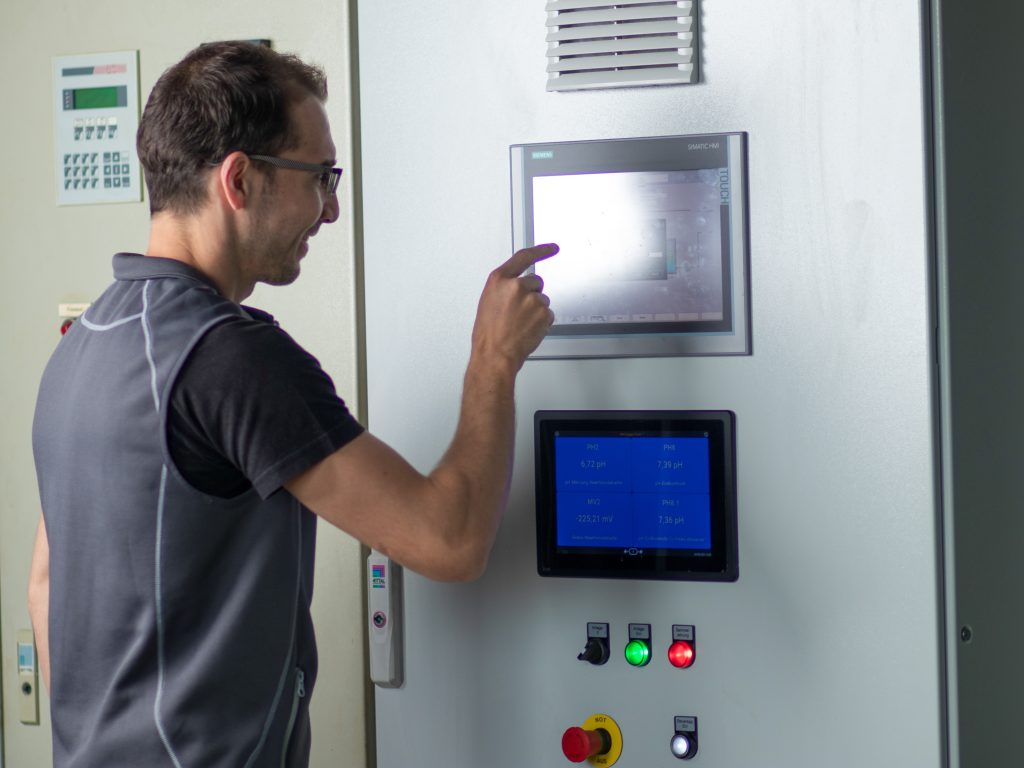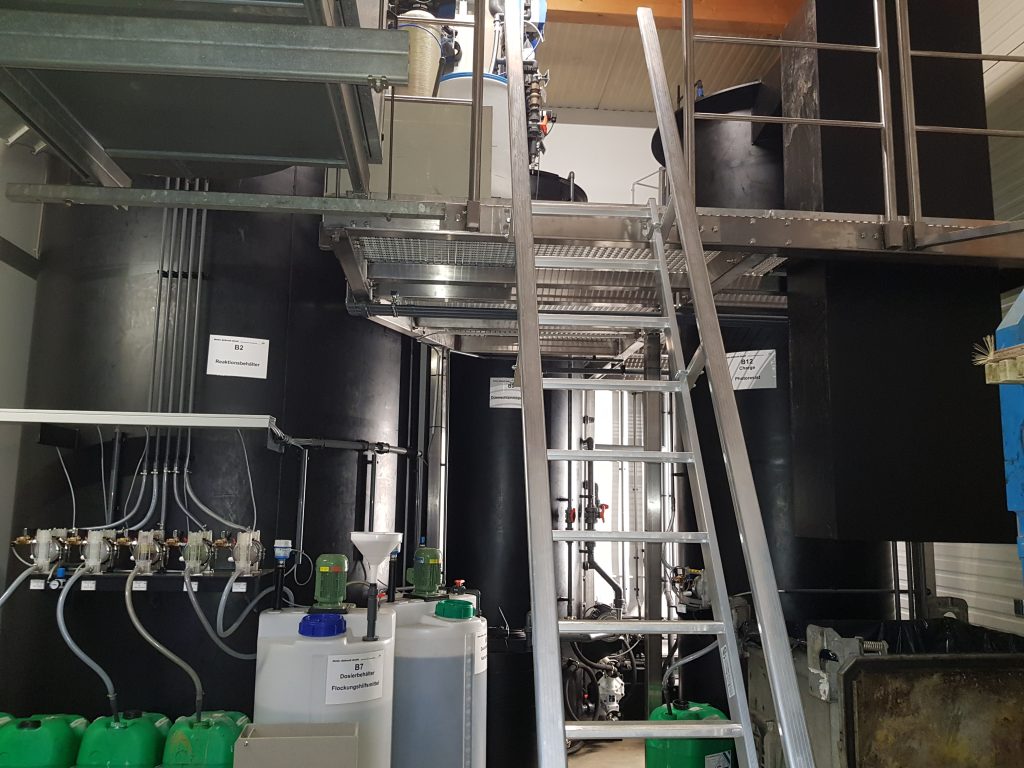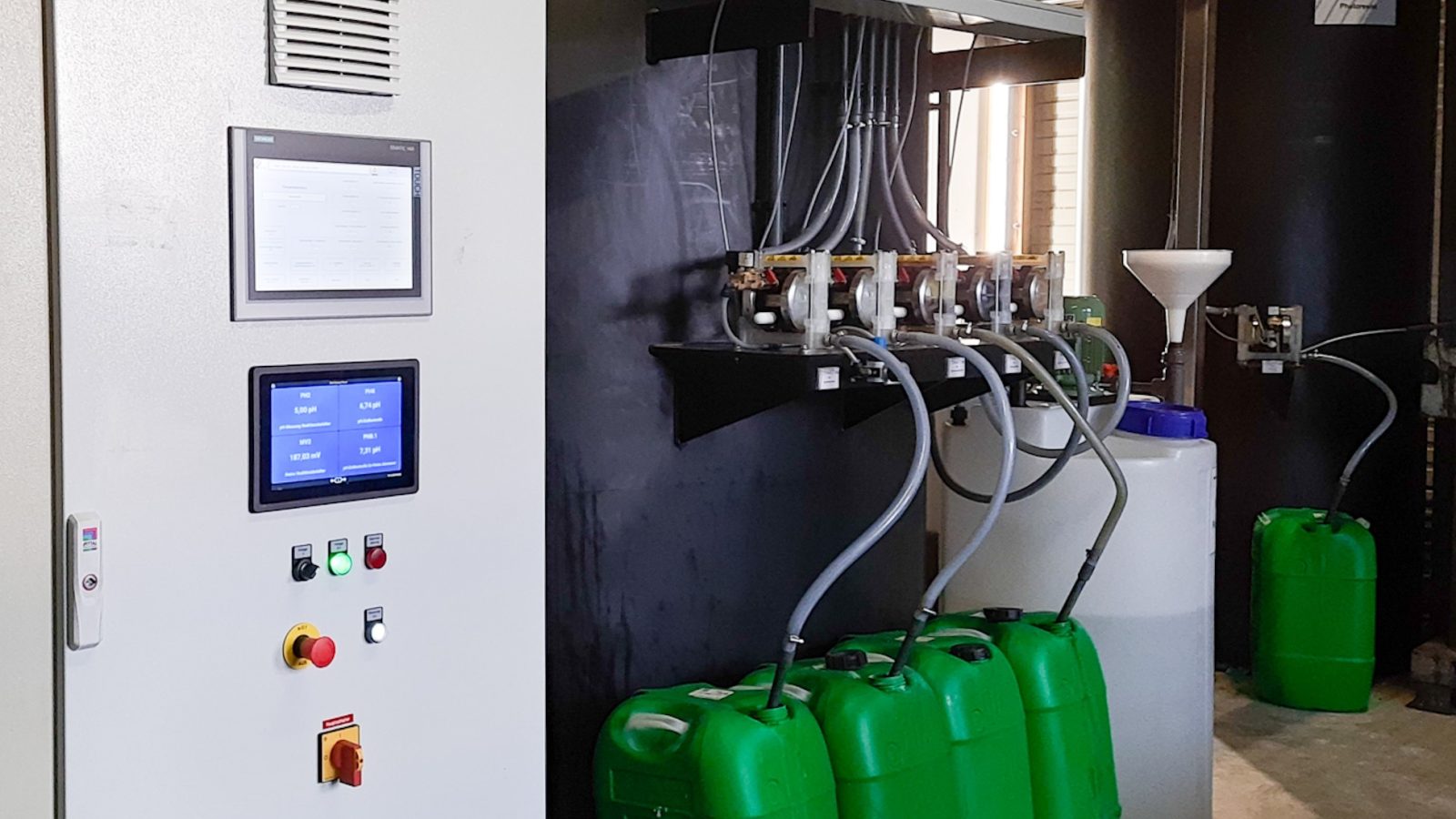Becker & Müller invests almost 400,000 € in the waste water treatment plant of Walter Süssmuth GmbH to reduce environmental pollution
Drinking water is a valuable resource. Only about 3% of the water on earth is fresh water. Many branches of industry, such as printed circuit board production, would be unthinkable without the use of water as a solvent. It is therefore important that industrial production, such as PCB production, reduces the environmental pollution caused by the waste water and, if possible, stays below the limits of the Waste Water Ordinance (AbwV).
The wastewater ordinance specifies the maximum load with which wastewater can be discharged into the sewage system. For example, the copper value (the proportion of copper in the 2-hour mixed sample) must not exceed 0.5 mg/l. The water used in production must therefore be pre-cleaned before it can be discharged into the sewage system. And this as effectively as possible, so that as few polluting substances as possible are contained in the wastewater before it is clarified and returned to the cycle.
A survey by the German Electrical and Electronic Manufacturers’ Association (ZVEI) in 2010 brought clear results that are still relevant. The participants in the ZVEI survey reported an average of 396 liters of water consumption per square meter of printed circuit board surface. Printed circuit board manufacturing companies naturally use a relatively large amount of water.
In the production of printed circuit boards, water with heavy metal contamination accumulates, which the companies then have to clean. The residues tend to be toxic and must be removed from the water cycle. Precipitation is the method of choice for separating heavy metals from used water or for pre-treating wastewater. The heavy metals are made insoluble, “precipitated”, by adding a precipitating agent to the water. The neutralizing agents, such as caustic soda or milk of lime, are also the precipitating agents in this process.
Heavy metals are elements that exceed a density of 5 g/cm³. Most of them are harmful to human health. They therefore have to be removed from the production wastewater. Part of the heavy metals can already be precipitated in the acidic wastewater by means of sulphide precipitation. A great time and cost advantage, as several work steps can be completed together, writes Chemie.de. The group of heavy metals includes those elements that form poorly soluble sulphides with the release agent. For example copper or zinc. Here, sulfide precipitation demonstrates its enormous advantage over hydroxide precipitation. The residual metal values in the wastewater are several powers of ten (10.000 to 10 million times) lower. The heavy metals that have been filtered out are then sent for environmentally friendly disposal or the recycling cycle.
Wastewater treatment was examined at Becker & Mueller as part of the long-term environmental and investment strategy. The goal was not only a better recycling rate for the sludge, but also less residues in the wastewater. The current investment at Becker & Mueller was brought forward in order to anticipate a necessary replacement due to the service life of the old system and from an environmental point of view. Investments were made in a new wastewater treatment plant worth almost EUR 400,000 € by “Walter Süssmuth GmbH Abwassertechnik – Umwelttechnik” from Reutlingen, Germany. Walter Süssmuth GmbH has been a partner for many years and is a competent partner in the field of wastewater treatment. At Becker & Mueller, for example, a specially customized process for separating different water flows and reducing residues was approved by the authorities. Metal residues in the water to be treated can be reduced by 30%.
The wastewater produced in the prototype production of Becker & Mueller is collected and up to 15,000 liters are temporarily stored before treatment. As soon as enough wastewater has accumulated and the set filling level has been reached, the storage tank is pumped into the reaction tank and treated there with various program sequences, depending on the contents of the wastewater. After the sedimentation period, the treated wastewater is fed into the clear water storage tank. The remaining so-called thin sludge is also dehydrated using a filter press and this water is then also fed into the clear water reservoir. Now the clear water is further cleaned of smaller suspended matter by means of a multi-layer filter. It only ends up in the sewage system after a final check. The pH value is measured continuously. The system values are continuously monitored by the employees. The “rescue value”, as an indicator of the remaining metal in the wastewater, is also regularly measured with a spectrophotometer for water analysis. In addition, the values are checked twice a year by the responsible authority (in an independent laboratory). At 0.1 mg/l copper, the waste water at Becker & Mueller is well below the required limit of 0.5 mg/l.
At Becker & Mueller, the latest investment fits into the long-term environmental strategy. Flushing systems with 4 cascades, instead of the legally required 3 cascades, have long been used in new wet systems. This optimizes the amount of water used and residues in the prototype production. With the current project, a further improved recycling of the sludge and a further reduction in water consumption and the amount of waste water per m² of circuit board area have now been achieved. With the largely automated Süssmuth wastewater treatment plant, the time required for water treatment and plant operation was also greatly reduced, water consumption improved and the recycling rate increased. The topic of environmental protection has traditionally had a high priority at Becker & Mueller and can also be actively used for the economic factor.


